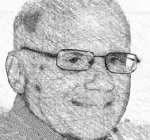The future of breast cancer screening is here
July 13, 2016
Breast cancer is the second-most common cancer among American women (skin cancer is No. 1). One in eight women (12.5 percent) in the U.S. will develop invasive breast cancer during her lifetime.
Detecting breast cancer is one of the most important health challenges of our time. The best screening tool for finding breast cancers when they are small, easier and less costly to treat is a mammogram. It is the only tool approved by the Food and Drug Administration for screening. Ultrasound and breast MRI are useful diagnostic tools after an area of suspicion has been found with a screening mammogram.
Mammograms aren’t perfect. Normal breast tissue can mask cancer so that it doesn’t show up on the mammogram, and on the flip side, mammograms sometimes identify abnormalities that look like cancer, but turn out to be normal tissue. For a significant percentage of women with dense breasts, seeing cancers with a mammogram is a challenge. In recognition of these limitations, health care providers continue to work on improving the way a mammogram is done.
Recent improvements in how we screen for, diagnose and treat breast cancer are many and significant. Breast tomosynthesis exams are the latest innovation in screening. Ten years ago, 80 percent of all the mammography systems in the U.S. were screen film-based systems. Today, 98 percent of the installed mammography systems are digital, and over 30 percent of the U.S. installed base is tomosynthesis-capable.
Mammography systems that are tomosynthesis-capable allow the radiologist to examine breast tissue layer by layer. For the tech and patient, tomosynthesis exams look and feel like a conventional mammography exam, but for the doctors tasked with reading the mammogram, tomosynthesis gives a clearer view of the overlapping slices of breast tissue and more confidence in their diagnosis.
Some argue breast tomosynthesis is still investigational
Breast tomosynthesis systems have been used in screening for more than eight years. The first systems were installed in Canada and Europe in 2009. In 2011, they were approved for use in the U.S. Tomosynthesis systems can now be found in over 50 countries and all 50 states. Of the 35 million women who will be screened for breast cancer this year in the U.S., more than 10 million will have a tomosynthesis exam.
Three venders offer tomosynthesis systems in the U.S. At least five vendors offer tomosynthesis systems in the international market. Large longitudinal studies in Europe and the U.S. make it clear that the benefits of tomosynthesis are significant, the benefits are significant for dense and fatty breasts and the benefits hold up over time. Is a mature technology with thousands of installs, hundreds of peer reviewed papers, offered by all the major mammography vendors, and millions of women screened with the technology, still experimental?
Emily F. Conant, M.D., Chief of Breast Imaging, the Department of Radiology at the Perelman School of Medicine at the University of Pennsylvania, and author of several of the key papers on the benefits of breast tomosynthesis, wrapped up the significance of tomosynthesis this way: “It’s the most exciting improvement to mammography that I have seen in my career, even more important than the conversion from screen-film mammography to digital mammography.”
Tomosynthesis exams are not “fast becoming” the gold standard in breast cancer screening. They already are.
About the author: Jim Culley, Ph.D., principal of ITERATIONS LLC, retired from Hologic, Inc. in 2015. His imaging career goes back to DuPont, Sterling Diagnostic Imaging and Direct Radiography Corp. For 19 years he was part of the team that made Hologic a leading global health care and diagnostics company. The opinions expressed by Dr. Culley are his and not necessarily those of Hologic.


